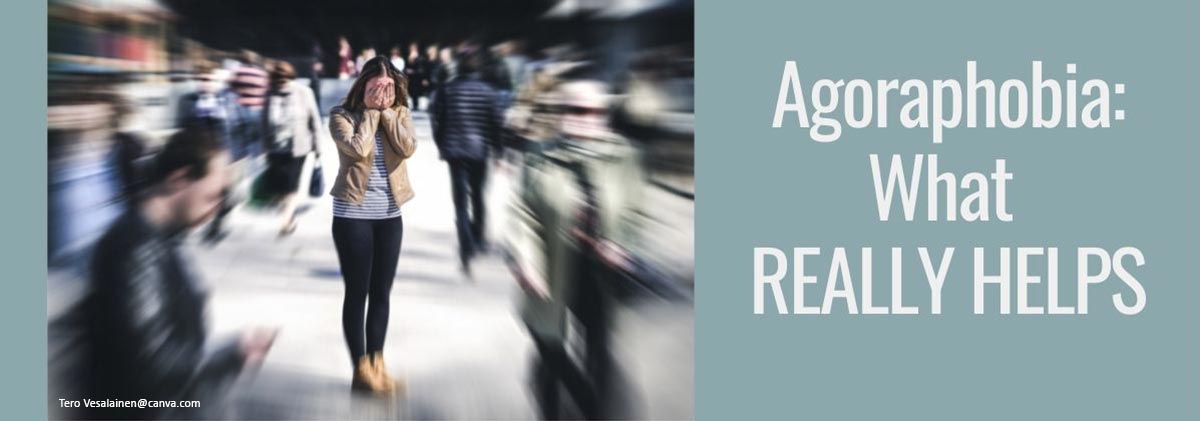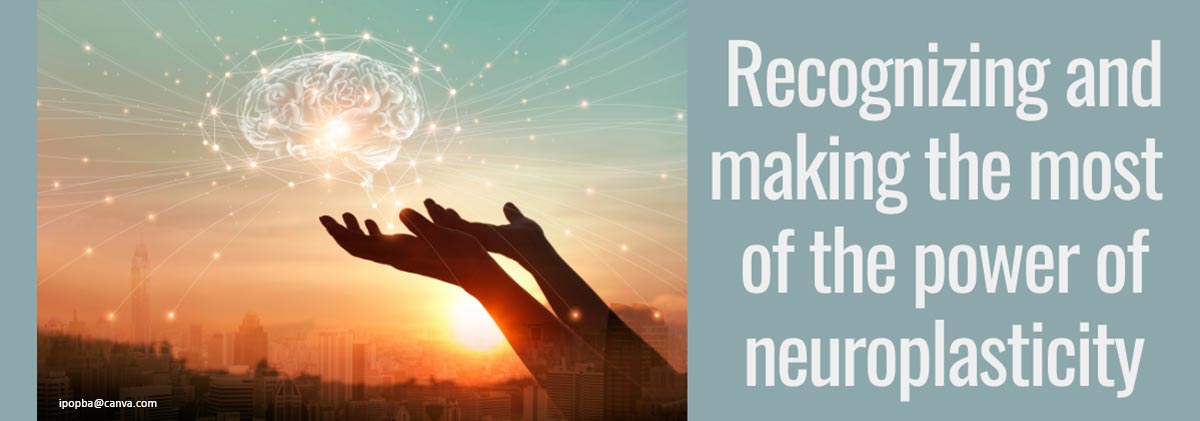
Agoraphobia and Panic Attacks – Best Treatment 2023
Before we go into the current best treatments for agoraphobia, here is a brief summary of what it means to suffer from this anxiety disorder. People who have agoraphobia react with fear or even panic in the following situations:
- When crossing large squares
- When riding on public transportation
- When being in large crowds
- When driving in heavy traffic or on the highway
- When waiting in long lines at supermarket checkout counters
What to Do When Panic Attacks Occur?
When a panic attack has already occurred, it is almost impossible for sufferers to remember all the helpful tips they have been given for such emergencies. What does help quite excellently, however, are the new anxiety-stopping techniques that have recently become available thanks to brain research. Here’s just one of many examples: Many of our anxiety patients report that their thoughts begin to spin wildly just before a panic attack. Suppose, in such moments, you succeed in identifying how round the thought carousel is spinning. In that case, there is a straightforward method of stopping this carousel and thus also preventing the anxiety attack.
Assuming that everything in your head is spinning clockwise, imagine as intensely as you can that the perceived spin in your head is going counterclockwise. Many of our patients were initially skeptical about the benefits of such a simple technique. However, they were more surprised when they tried it out. Over 90% of all concerned ones, which could determine shortly before a panic attack a clear turning direction in their head and then your fantasy used, to let turn exactly this thought carousel the other way around, report that you could avert thereby the panic attack. Just try one out the next chance you get. Sometimes it’s the elementary things that have a considerable effect.
Good to know:
In our online video course, THE ANXIETY CURE, you will learn many more ways in which our patients have not only been able to stop the rising panic but have even permanently overcome the anxiety disorder itself.
Panic Disorder and Agoraphobia
Panic disorder is an anxiety disorder in which sufferers have repeated unexpected panic attacks. These episodes of intense anxiety with symptoms such as chest pain, palpitations, shortness of breath, dizziness, or abdominal discomfort usually last only a few minutes but, in exceptional cases, can last for an hour or longer. Most sufferers describe panic attacks as sudden sensations of extreme fear and a feeling of losing control. These unexpected anxiety attacks peak within minutes and can trigger various physical symptoms. The fear of losing one’s mind or dying at any moment is common among sufferers. The fear of further panic attacks causes sufferers to avoid similar situations. Panic disorder and agoraphobia often occur in combination.
Good to know:
In agoraphobia, the fear is NOT triggered by a real threat but only by constantly brooding about what COULD happen.
In severe agoraphobia, even a brief thought of possibly being confronted with a fearful situation often triggers a range of anxiety symptoms. These include:
- Sweating or shivers of cold
- An unbearable feeling of helplessness
- Sudden tingling sensations in arms and legs
- Pressure on the chest, lump in the throat up to shortness of breath
- Drowsiness up to the feeling of fainting
- Heart palpitations, often associated with the thought that one is about to have a heart attack
- Panic attacks, associated with acute fear of death. Those affected have the feeling that they will die at any moment.
How agoraphobia is treated depends, among other things, on whether those affected “only” experience intense fears or increased panic attacks have already occurred in fearful situations.
While agoraphobia without panic attacks is often still treated without psychotropic drugs, antidepressants and/or strong tranquilizers are often used for agoraphobia with panic attacks. However, drug treatment for anxiety and other mental disorders carries risks. These medications can be addictive and/or lead to serious side effects. But fortunately, a new form of therapy has been available for several years that does not require psychotropic drugs and usually leads to a significant reduction in anxiety.
Agoraphobia – Which Treatment Helps Best?
For a long time, exposure therapy was considered the treatment of choice for agoraphobia. This is usually carried out as part of cognitive behavioral therapy. However, if those affected also suffer from recurring panic attacks, antidepressants and/or strong tranquilizers, so-called benzodiazepines, are usually used.
This combination of psychotherapy and pharmacotherapy is still the treatment most often used. But it is by no means the only way to eliminate agoraphobia. A gentler and faster way is, for example, Solution-Focused Therapy (SFT) or the Bernhardt Method, which you can learn via our online course, THE ANXIETY CURE.
Exposure Therapy for Agoraphobia – Does it Really Work?
By regularly “facing their fears,” anxiety patients should learn that neither the situation is threatening nor they are helpless, but that the phobia is only a product of their own fears of expectation. All the feared symptoms, such as palpitations, tingling sensations, breathing difficulties, or the unbearable feeling of helplessness, may seem life-threatening. But they do not threaten life and limb at any time and usually disappear after some time. So much for the theory, unfortunately, even the relevant professional literature points out that the implementation of exposure therapy often proves difficult.
In practice, however, true freedom from anxiety is rarely achieved through exposure therapy. Although those affected can function within society again, the oppressive feelings are usually still present subliminally. Therefore, for many agoraphobics, it is only a matter of time before they gradually return to avoidance behavior. After all, no one likes to voluntarily stay in situations that still trigger unpleasant feelings, even if they have learned not to take them quite so seriously anymore.
Agoraphobic Avoidance Behavior
Agoraphobic avoidance behavior always occurs when a fear-inducing situation is avoided as much as possible. This can be, for example, attending a public event or crossing a large square. Unfortunately, such avoidance strategies do not reduce anxiety symptoms in sufferers but rather ensure that the phobia spreads to more and more areas of life. This is one of the reasons sufferers often try to regain a little bit of normality with the help of tranquilizers.

Agoraphobia – The Problem with Safety Anchors
Another problem with agoraphobia is the use of safety anchors. This can be, for example, the presence of another person they trust, such as their partner or even a therapist. But calming tablets or a lucky charm is also suitable as safety anchors. If this is present during exposure therapy, the feeling of anxiety may be significantly reduced since there is something or someone within reach which gives one a sense of security. On the other hand, the absence of a safety signal can actually fuel anxiety. For example, it is not uncommon for sufferers to panic when they realize they have left the house without having a tranquilizer tablet for emergencies. In this respect, the long-term goal of any therapy should be to enable patients to do without safety anchors altogether.

Targeting Neuroplasticity Against Anxiety Disorders
Neuroplasticity is the ability of the human brain to form new networks even at an advanced age. Literally, every single thought in the brain gives rise to new connections. Things we think repeatedly can be recalled more and more quickly, while thoughts that are rarely or never thought are neurally degraded.
Good to know:
Anyone who constantly thinks about what could happen in the worst-case scenario will sooner or later have their brain automate fear in entirely harmless situations.
What the brain of an agoraphobic has largely unlearned, however, are thoughts with the following content:
- Staying relaxed in large crowds of people
- Ride unaccompanied on public transportation
- Drive even on the highway in heavy traffic
- Participate in everyday life again without avoidance behavior
- Fly relaxed on vacation
- Cross large squares without claustrophobia
- Go to parties or take part in family celebrations in a relaxed manner
- Waiting relaxed at the checkout in the supermarket
Good to know:
Stimulating neuroplasticity in a targeted way so that a brain trained for anxiety reconnects better and responds with ease instead of panic is one of the most promising avenues in psychotherapy.
And indeed, this approach (e.g., in cognitive behavioral therapy) has been around for a long time, but with a crucial difference to the Bernhardt Method. Thanks to the latest findings in brain research, this new therapy form uses special mental exercises that can significantly accelerate the positive rewiring of the brain. In concrete terms, this means that a significant reduction in anxiety does not require 25 or even 50 hours of therapy, as is usually the case. Still, the same result can be achieved after just 7 or 8 hours. Moreover, since this method is also suitable for self-therapy and can be learned quite comfortably from home with the help of an online course, there is also no need to wait months for a therapy place – a not inconsiderable advantage, especially for people with agoraphobia.
How to Recognize an Agoraphobic
Agoraphobia leads to pronounced avoidance behavior. This is because the longer someone has this anxiety disorder, the greater the fear of a possible loss of control. Therefore, agoraphobics usually develop sophisticated avoidance strategies to avoid being confronted with fearful situations. In this way, many also try to keep their intense fear a secret for as long as possible. This creates a vicious circle that is often difficult for outsiders to understand. Tense situations such as air travel are avoided because those affected pretend to no longer reconcile boarding an airplane with their ecological conscience. Large gatherings, such as family celebrations or company parties, are also no longer attended because people are supposedly still angry with some uncle or colleague.
However, at first, hardly anyone suspects these are usually just pretextual reasons for not publicly admitting that one has a panic disorder. However, if you stay away from social events for too long, you become increasingly socially isolated. As a result, there is a risk that agoraphobia will be joined by depressive moods because regular social contact is an essential component of a healthy psyche.
Agoraphobia: Take First Warning Signs First
Particularly in the initial phase of agoraphobia (whether with or without panic attacks), why people avoid the feared situations usually sounds entirely plausible. But suppose the avoidance behavior expands over time to such an extent that, for example, buses and trains are avoided in addition to airplanes. In that case, all alarm bells should be ringing.
Even if invitations to parties are gratefully accepted, but the person repeatedly fails to appear, someone likely has had an anxiety disorder for some time. Talking to someone in private about their suspicions and showing understanding has helped many agoraphobics to get out of their self-imposed isolation.

Agoraphobia Definition: Easy to Understand
Agoraphobia comprises the Greek words agora and phóbos, meaning marketplace and fear. Agoraphobia is, therefore, the fear of crowded places. But the term is misleading. As a rule, sufferers do not fear other people or public spaces. Agoraphobics are only constantly afraid of having another anxiety attack in public and being observed or even prevented from escaping the situation.
Medication for Agoraphobia: Why Caution is Advised
Until now, both sufferers and many psychotherapists and psychiatrists assumed that the treatment of agoraphobia was usually protracted and had to be supported by medication. This was especially true when severe panic attacks pushed patients more and more into avoidance behavior. Suppose those affected try (often out of shame) to somehow cope with fearful situations with the help of tranquilizers (benzodiazepines). In that case, they often end up in a dangerous vicious circle.
But this strategy has a huge catch: these drugs do not change the cause of the problem. They only suppress the feeling of fear for a short time. In addition, this usually unnecessarily delays psychotherapy, which means that agoraphobia can become more and more widespread. This means that more and more situations, which used to be mastered without any problems, suddenly feel threatening and unreal. Whereas in the past, people only took tranquilizers now and then, they now take the medication every day to at least do something about the drowsiness, the breathing difficulties, and the increased heart rate.
But this neither reduces the frequency of anxiety attacks nor the feeling of fainting. Instead, there is a risk that the anxiety disorder will be joined by another problem: physical dependence on medication. If you then want to stop taking the tranquilizers abruptly (which we urgently warn against, as they should permanently be discontinued under medical supervision!), your body and psyche will react with severe withdrawal symptoms in the form of dizziness, rapid heartbeat, drowsiness, shortness of breath as well as extreme panic attacks and the feeling of going crazy.

SSRI for Anxiety – Major Problems Due to Discontinuation Syndrome
Antidepressants (selective serotonin reuptake inhibitors or SSRIs), which are also frequently used for agoraphobia and panic attacks, are also coming under increasing criticism. Although pharmaceutical companies still vehemently refuse to admit that these drugs also pose the risk of psychological dependence, a discontinuation syndrome can no longer be denied. Those affected then suffer from anxiety attacks again during the discontinuation phase. However, the anxiety disorder has actually already been overcome. However, since the rekindled anxiety may last for several weeks or even months, many sufferers believe that the missing medication is the cause for the renewed appearance of anxiety and panic and return to their original prescription. This vicious circle often causes agoraphobics to take antidepressants unnecessarily, sometimes for decades. In fact, they only suffer from a discontinuation syndrome, i.e., temporary psychological withdrawal symptoms triggered by stopping the medication.
Important:
The discontinuation syndrome can be mitigated by stopping SSRIs (as well as benzodiazepines) only very slowly and under medical supervision. For this purpose, the dose is usually halved every 4 to 6 weeks until the medication is discontinued entirely.
Of course, it is even better if they do not become dependent on psychotropic drugs in the first place. Instead, choose a therapy that is more helpful for your mental health conditions and does not use medication at all. Drugs only suppress the symptoms of an anxiety disorder anyway. However, you can only find and overcome the real triggers if you find and work with the form of psychotherapy that suits you.